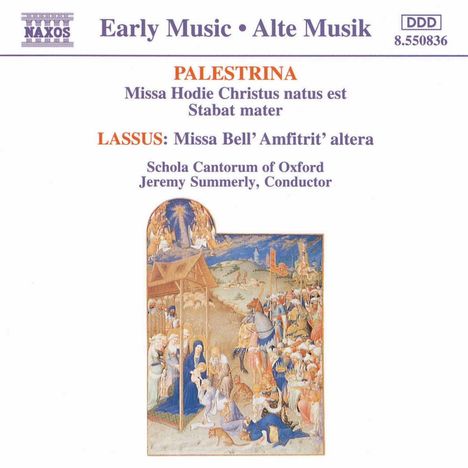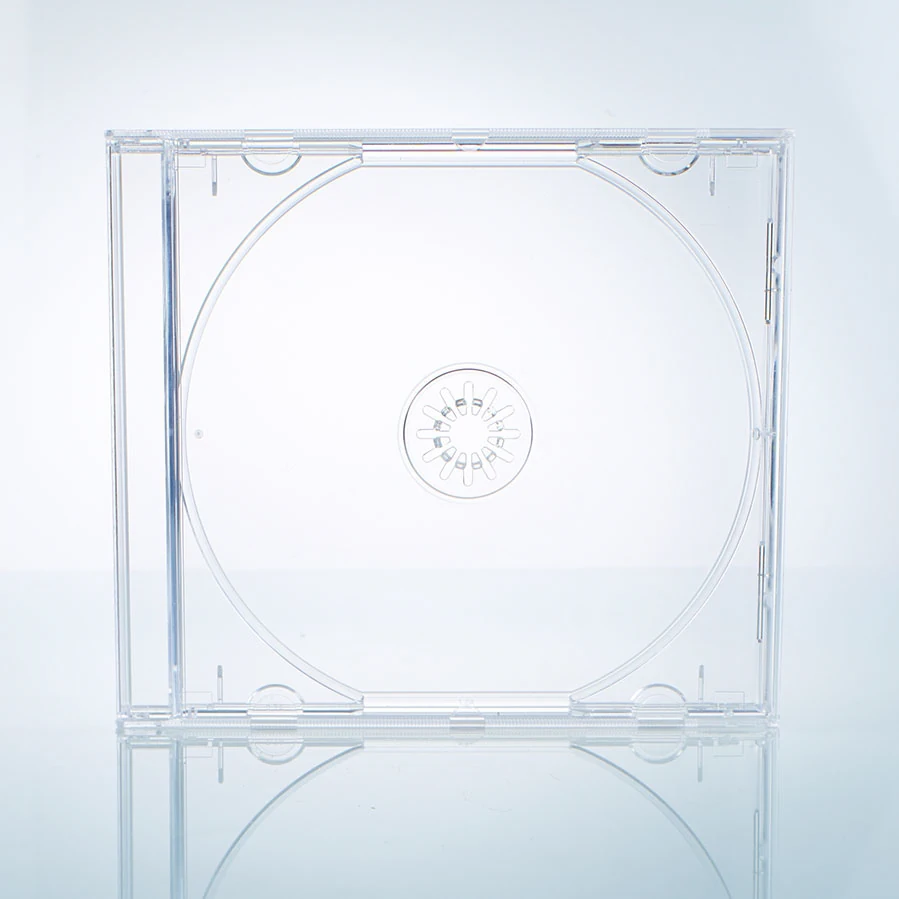Giovanni Pierluigi da Palestrina: Missa "Hodie Christus natus est" auf CD
Missa "Hodie Christus natus est"
Herkömmliche CD, die mit allen CD-Playern und Computerlaufwerken, aber auch mit den meisten SACD- oder Multiplayern abspielbar ist.
+Motette "Hodie Christus natus est"; Stabat mater
+Lassus: Missa "Bell' Amfitrit' altera
- Künstler:
- Schola Cantorum of Oxford, Jeremy Summerly
- Label:
- Naxos
- Aufnahmejahr ca.:
- 1993
- Artikelnummer:
- 6921088
- UPC/EAN:
- 4891030508361
- Erscheinungstermin:
- 25.11.1993
- Serie:
- Naxos Early Music Collection
Weitere Ausgaben von Missa "Hodie Christus natus est" |
Preis |
|---|
Die Messen 'Bell' Amfitrit' altera" und 'Hodie Christus natus est' zeugen von der Kunstfertigkeit des jeweiligen Komponisten, und die beiden Werke weisen grundlegende stilistische Unterschiede auf. Beide Messen sind achtstimmig geschrieben und beide schaffen eine Vielfalt von Chortexturen - Palestrina offen und Lassus subtiler. Palestrinas Zugang zum Text der Messe ist jedoch expansiv, während Lassus prägnanter ist; und Palestrinas kontrapunktische Linien sind nahtlos, während Lassus' Stimmführung häufig nicht durchgängig ist.
Die beiden Messen gelten als Meilensteine der Musikgeschichte, indem sie die unterschiedlichen Charaktere der beiden Komponisten unterstreichen - Palestrina gilt in dieser Musik als robust und unfehlbar, während Lassus frenetisch und intensiv wirkt. Eine solche Verallgemeinerung bietet zwangsläufig ebenso viele Ausnahmen wie Regeln. Für jede Phrase der "Missa Hodie Christus natus est", in der Palestrina ehrfurchtsvoll objektiv ist, gibt es ebenso viele Momente harmonischer Launen; und in jedem Abschnitt der "Missa Bell" Amfitrit' altera", in dem Lassus eine intensive persönliche Beziehung zwischen Text und Musik zeigt, liegt eine strukturelle Sicherheit zugrunde, die so solide ist wie alles, was Palestrina geschaffen hat.
Product Information
The 'Bell' Amfitrit' altera' and 'Hodie Christus natus est' masses are a testament to the craft of each composer, and the two works demonstrate fundamental differences of style. Both masses are written for eight voices and both create a variety of choral textures - Palestrina openly and Lassus more subtly. However, Palestrina's approach to the text of the mass is expansive whereas Lassus is more concise; and Palestrina's contrapuntal lines are seamless whereas Lassus's voice-leading is frequently disjunct.
The two masses serve as landmarks of musical history by confirming the different characters of the two composers - Palestrina is seen in this music as robust and infallible whereas Lassus appears frenetic and intense. Such generalization inevitably provides as many exceptions as rules. For every phrase of the 'Missa Hodie Christus natus est' during which Palestrina exhibits respectful objectivity there are as many moments of harmonic caprice; and within every section of the 'Missa Bell' Amfitrit' altera' within which Lassus displays an intensely personal relationship between text and music there is an underlying structural security as solid as anything created by Palestrina.
Disk 1 von 1 (CD)
Missa hodie Christus natus est
-
1 Kyrie
-
2 Gloria
-
3 Credo
-
4 Sanctus
-
5 Agnus Dei
-
6 Hodie Christus natus est (Motette)
-
7 Stabat mater
Missa bell' amfitrit' altera
-
8 Kyrie
-
9 Gloria
-
10 Credo
-
11 Sanctus
-
12 Agnus Dei
Mehr von Giovanni Pierlu...
-
Giovanni Pierluigi da PalestrinaMessa per Santa CeciliaSuper Audio CDVorheriger Preis EUR 19,99, reduziert um 0%Aktueller Preis: EUR 7,99
-
Jean Rondeau - Gradus ad ParnassumCDVorheriger Preis EUR 19,99, reduziert um 0%Aktueller Preis: EUR 9,99
-
Violinsonaten aus Italien (17.Jahrhundert) - "Mille Consigli"CDAktueller Preis: EUR 19,99
-
Augsburger Domsingknaben - Palestrina 500Super Audio CDAktueller Preis: EUR 19,99








